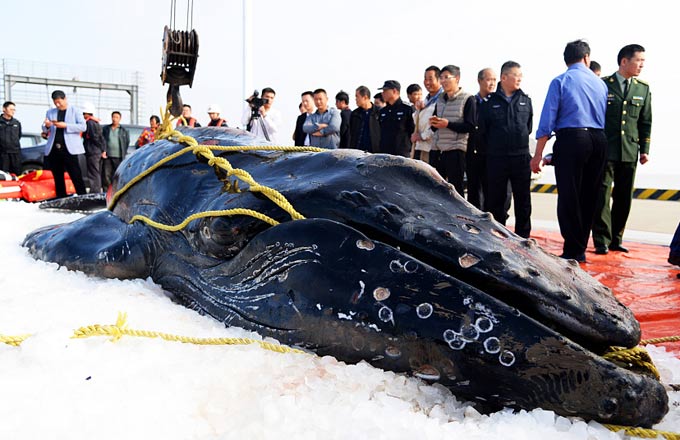China making good use of science and technology to tackle climate change
BEIJING -?China has launched a new meteorological satellite to monitor carbon emissions, one of a slew of measures made by the country to combat climate change.
As delegations from various countries are discussing how to implement the Paris Agreement at the 23rd Conference of Parties (COP23) to the United Nations Framework Convention on Climate Change (UNFCCC), China is making good use of science and technology in combatting global warming, with satellites, new energy vehicles (NEVs), clean energy the highlights.
The satellite launched Wednesday, Fengyun-3D, will work in tandem with Fengyun-3C, already in orbit, improving atmospheric sounding and monitoring greenhouse gases.
One of the main tasks of the satellite is to monitor global radiation, snow and ice cover, and sea surface temperature. It will also obtain the distribution of greenhouse gases and ozone, providing information for short-term climate monitoring and climate change forecasting.
According to experts, the country will send up another four Fengyun-3 satellites around 2018 to 2021, which will nearly double the efficiency of meteorology monitoring system.
Other recent anti-global warming technology includes the weather satellite Fengyun-4 as well as its first carbon monitoring satellite TanSat launched last December.
Besides weather monitoring and forecasting, Fengyun-4 is able to provide evidence for climate change forecasts. It can closely detect temperature changes on the surface of the entire western Pacific and the Indian Ocean.
TanSat was China's first satellites to monitor greenhouse gas emissions, which is of great importance to a full understanding of the global carbon cycle process and its impact on global climate change, Yang Jun, director general of the National Satellite Meteorological Center, part of the China Meteorological Administration, said in late October.
China is also taking solid measures to fight global warming on the ground.
It is at the forefront of the renewable energy use, with a surge in its number of new energy vehicles (NEVs) and its increasing ability to harness hydro, wind, solar and nuclear power.
Electric vehicle battery producers are flourishing in China. Some of the leading companies have made breakthroughs in the core technology and are competitive in both domestic and overseas markets.
The government has taken solid steps to encourage the use of NEVs, such as tax exemptions, discounts for car purchases and an order for government organizations to buy more NEVs.
Last year, China surpassed the United States as the world's biggest electric car market, with 507,000 NEVs sold in the country, an increase of 53 percent year on year.
China is the world's biggest producer, consumer and investor in renewable energy, according to a report about it's renewable energy development in 2016 published this October.
The country ranks first in terms of generation capacity of hydro, wind and solar power, as well as nuclear power capacity under construction, Li Gao, an official with the climate change department of the National Development and Reform Commission, said at a State Council press conference in October.
The country is not only accelerating its renewable energy capacity building, but also exporting clean energy technologies to the rest of the world.
Recently, Chinese renewable energy company BYD sealed a deal with a factory in Sao Paulo to supply 180 megawatts of solar modules.
"The current annual production of solar modules of the factory is 200 megawatts," said Li Tie, manager of BYD Brazil Branch. "The increased production with the help of BYD will meet the demand of Brazil's growing renewables market."
CRRC Zhuzhou Electric, a propulsion and control systems provider, signed a framework agreement with German wind turbine maker Senvion to supply 100 wind driven generators in October.
The Chinese company agreed to produce at least 100 3.7MW-144 wind turbines for Senvion in the next three years.
Over the past decade, while maintaining economic growth, China has cut carbon dioxide emissions by 4.1 billion tonnes. Last year, the country cut its carbon intensity, the measure of carbon dioxide emissions per unit of GDP, by 6.6 percent, surpassing its goal of 3.9 percent.
The government has promised to reduce its carbon intensity by 18 percent, and to increase the share of non-fossil fuels in primary energy consumption to 15 percent, by 2020 from 2016.
The International Energy Agency (IEA) saw a rosy future for China's contribution in improved energy mix.
The World Energy Outlook 2017 published by the IEA earlier predicted that "China's choices will play a huge role in determining global trends, and could spark a faster clean energy transition."
The scale of China's clean energy deployment, technology exports and outward investment makes it a key determinant of momentum behind the low-carbon transition," said the report.



























